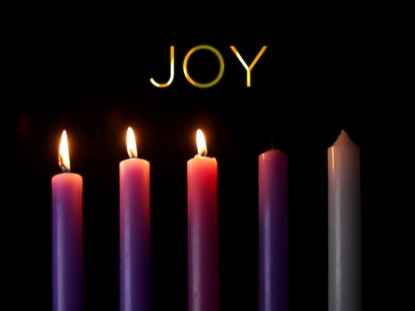The Third Sunday of Advent
Zephaniah 3:14-20 & Luke 3:7-18
JOY
We sing of this season as the most wonderful time of the year. Yet the message of John the Baptizer, central to our Advent texts, is an exhortation to radical change, a dramatic course-correction in how we live and treat each other. It’s a counter-cultural call to conversion and repentance. It’s not quite the snuggly message we’d share over hot chocolate drinks looking out upon a serene snow scene. It’s a call from comfort to commitment, from sarcasm to solidarity, from merely believing to also how we behave. The prophetic words heard from Zephaniah are beautiful, they paint the picture of a long-deserved “happy ending” victory of good over evil, light over darkness, of the lame and outcast overcome the oppressors and proud. Yet we jump too quickly if we assume that the people then heard Zephaniah, and knew what God intended. Zephaniah writes and speaks in the time of exile, oppression in a foreign land, the seeming defeat of Yahweh by the foreign gods of pagan peoples.
The name Zephaniah means “Yah(weh) has concealed, hidden or lies in wait”. He most likely was the great, great grandson of King Hezekiah and prophesied in the days of Josiah, king of Judah (B.C. 641-610) who renovated the Temple after much decline. Zephaniah was one of the royal advisors, and most likely a contemporary of the prophet Jeremiah, with whom he had much in common. He spoke boldly against religious and moral corruption. It’s quite possible that in his idolatry (worship of Baal and Astarte) had even penetrated into the sanctuary of the Temple. It’s in this great darkness, despair of knowing God, of God being present – that the prophets talks not only of hope, but of the joy of Yahweh’s victory which will bring peace even to those on the margins: the lame and outcast.
We continue the story of John the Baptizer, moving from his arrival and vocation to his message and ministry. He preaches in multiple ways: sarcasm, warnings, practical teachings, metaphor, a call to conversion, a reinterpretation of faith identity. Ultimately this plethora of rhetorical devices is the vehicule of the message that God expects his people to behave, not merely believe.
We can hear the message as harsh, yet the people streamed out to him. We’re told that the excitement and wide-spread commitment witnessed at his desert “revivals” didn’t merely move the people, but made them suspect that John himself was the Messiah – God’s promised deliverance for the people. While his call to repentance (metanoia – which mean turning 90˚ around to go in a different direction, a sort of course-correction) seems jarring, it was quite pragmatic. “What then should we do?” – that’s the question of the crowds. John gives a practical answer to each group that asks: care for the needy, practice truth and justice. Don’t give until you are in need yourself, don’t abuse your position. Recognize the brotherhood and sisterhood among you – for you each are made in God’s image.
Today we continue to ask “what should we do?” in response to our own living faith in the 21st century.
Questions for Going Deeper:
- What do you think is the message of this gospel selection?
- How have you experienced it as truth in your life?
- What invitation do you hear from God in this text to act, say, be or do?
